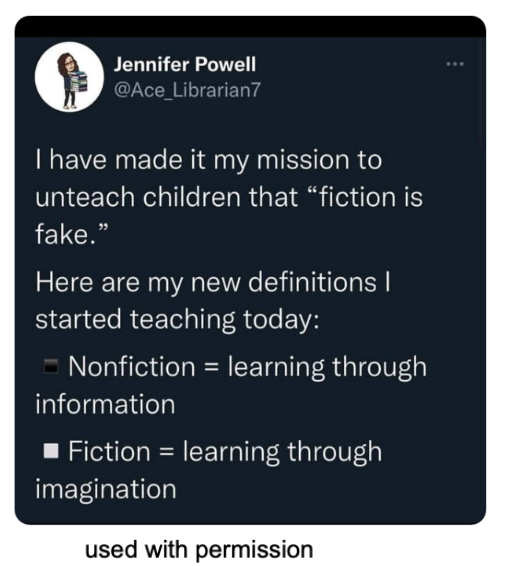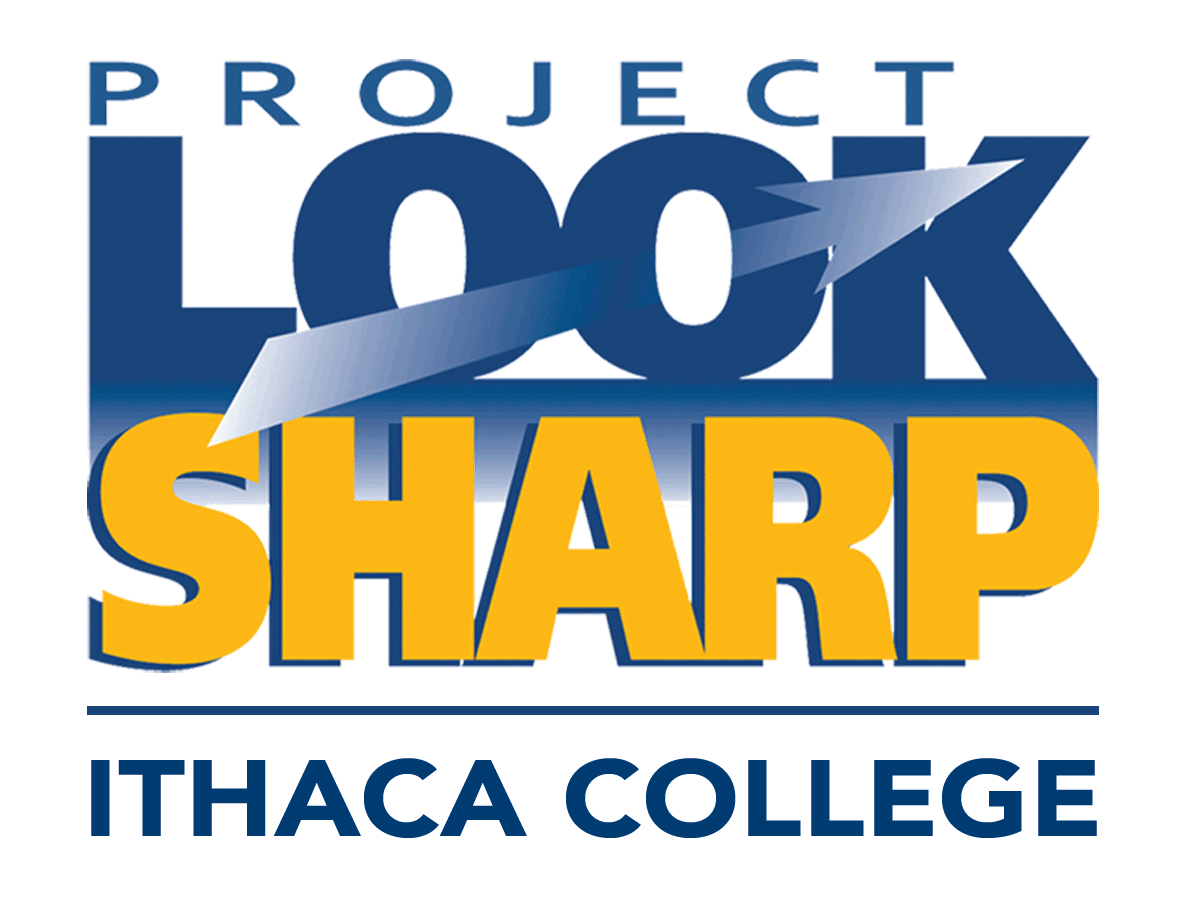ACT Awareness and Critical Thinking Activities for Teaching about Misinformation in Grades K-5
WELCOME to ACT, a flexible set of interconnected K-5 lessons and activities that help students learn how to detect, avoid, and resist online misinformation.
5. Fake versus Fantasy
This skill area helps children learn to discern between deceptively fake (which is a problem) and fantasy (which is not). Fantasy likely includes characters or scenarios that could never actually happen in real life, but it might also include ideas that are very real and valuable.
Fantasy is important for everyone, but imaginary play is an exceptionally important part of early childhood. It is the way that young children (at least through the primary grade years) process the world. So while it is important for students to know that some media show fake things and try to make people think that it’s real, it is also important to avoid implying that fantasy or fiction or pretend is somehow bad. This tip from a librarian might help:

Students will learn that
- It’s fine to enjoy fantasy and other fiction, but they aren’t the best sources if what you need is factual information.
- Intention matters. There is a difference between sources designed to entertain and those that are made to purposefully deceive us. It’s best to avoid the latter.
- It is difficult, and sometimes impossible to tell whether an image is real just by looking at it. That’s why we need to learn other research strategies.
- Asking (and answering) media analysis questions can help determine whether something is real.
- Reverse image searches combined with word searches can be used to verify images.
Students will practice
- Distinguishing between different types of sources.
- Doing reverse image searches.
- Asking media analysis questions such as: Who made this? Where was it shared? What do they want me to think? Why would they want me to think that? If I believe this is true, who benefits or who might be harmed?
Routines for Understanding Fake versus Fantasy
Share criteria for your selection of media sources for particular purposes, especially in instances where you are using fictional literature to help students gain a deeper understanding of social situations or emotions. Help them see when fantasy or fiction can be helpful as a resource and when it is not (like when they are in search of facts).
ACT does not recommend introducing AI tools to students who are not already using them. However, if students are already engaging with AI, help them understand that no matter how human AI might seem, it is not. Do not address it by name, as if initiating a conversation or talk about it as anything but a machine. If activation commands require statement of a name, precede it with the word “computer” (the way you might use Dr. or Mr. or Officer).
Activities
From Real Life or a Movie
What to Do with Clickbait
Shorts: Practicing Inquiry with Dinosaurs
Shorts: Using Baby Sharks to Explore Fact, Fake, or Fiction
For Reinforcement
Framing and Storytelling
Introduction to Lateral Reading
Shorts: Practice Choosing Sources with Spiderman
Return to ACT home
© Awareness & Critical Thinking (ACT) Program, Texas Woman’s University, 2024 was developed by Dr. Faith Rogow, InsightersEducation.com as part of the ACT Program led by Dr. Tara Zimmerman, Texas Woman’s University. This project was made possible in part by the Institute of Museum and Library Services, IMLS grant #2023-057. Educational use is encouraged. All media examples are either public domain or protected by fair use. Requests to re-publish, duplicate, or distribute any ACT document outside of educational settings or for profit should be directed to Dr. Zimmerman.
